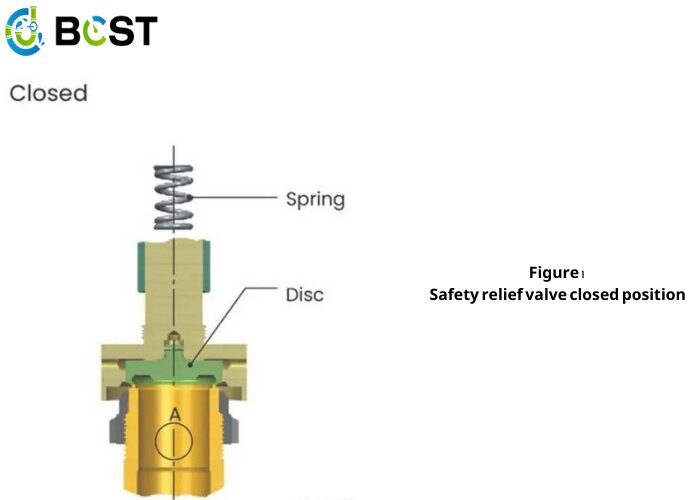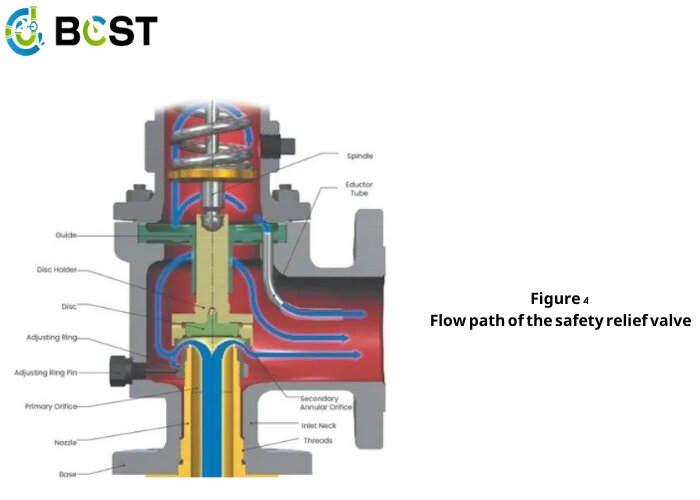Pressure-reducing valves have been around for centuries and continue to play a very important role as the last line of defense to protect life and property in the event of an over-pressure event.
Pressure Relief Valve is a term used to describe a class of valves designed for over pressure protection applications. You may have heard many different PRV (Pressure Relief Valve) terms: Safety Valve, Relief Valve, Safety Relief Valve, or Poilt Operated Safety Relief Valve. Relief Valve, Relief Valve, Safety Relief Valve or Poilt Operated Safety Relief Valve.) They all operate in a similar, but not identical, manner. Just like any other type of equipment, everything seems to be the same whether you look at it from the outside in. If you start digging deeper into the details, you’ll see the differences. So let’s get right to it and dive into the details. First, we’ll go over some terms and definitions, and then we’ll take a closer look at spring-loaded safety relief valve operation.
Pressure Reducing Valve (PRV) – A device designed to open and release excess pressure, then close and prevent further flow of fluid once normal conditions are restored.
Relief Valve (RV) – A spring-loaded pressure relief valve actuated by static pressure upstream of the valve. Pressure relief valves are primarily used for incompressible fluids.
Safety Relief Valve (SRV) – A spring-loaded pressure-reducing valve that can be used as either a safety valve or a pressure-reducing valve depending on the application.
Pilot Operated Safety Relief Valve (POSRV) – A type of pressure relief valve in which the main relief device or main valve is combined with and controlled by an automatic auxiliary relief valve called a pilot-operated valve.
Safety Valve (SV) – A spring-loaded pressure relief valve actuated by hydrostatic pressure upstream of the valve and characterized by rapid opening or popping off. Safety valves are typically used for compressible fluids, primarily steam.
Now, let’s get to the subject of this article, which is the basis for the operation of a spring-loaded safety relief valve (SRV).
The Spring Loaded Relief Valve SRV consists of an inlet nozzle connected to the vessel or system to be protected, a flapper that moves to control flow through the nozzle, and a spring that controls the valve opening time and flapper position. The valve opens to release a defined volume by using inlet system pressure to overcome the spring load. As shown in FIG. 1, when the valve is closed, the spring force resists the upstream pressure acting on the seat surface (area A). As the pressure increases, the pressure at (A) tends to balance the spring force and the pressure holding the valve seat together approaches zero.

As the upstream pressure increases to within 1% to 2% of the valve’s set pressure, the media will pass through the seat surface into chamber B, as shown in Figure 2. The flow restriction in the secondary annular orifice causes the pressure to increase and act on a larger area, creating additional force to overcome the spring force. The flap will then leave the nozzle seat and the valve will “pop” open.

Once the valve is open, additional pressure buildup occurs at (C) as shown in Figure 3. This is due to the sudden increase in flow and the restriction of flow through another annular hole formed between the inner edge of the valve retainer and the outer diameter of the regulating ring. These additional forces at (C) cause the valve to lift considerably when it “pops off”. The flow is limited by the opening between the nozzle seat and the valve seat until the valve seat is lifted from the nozzle seat by approximately one-quarter of the nozzle throttling diameter. After the valve reaches this lift, the flow is limited by the main throttle orifice, not by the area between the seat surfaces. By positioning the individual adjustment rings, the discharge (difference between opening and closing pressures) can be kept within limits. Discharge occurs when the spring force cannot overcome the sum of the forces at (A), (B),and (C) until the pressure at (A) drops below the set pressure.

The lower diagram in Figure 4 shows the fluid flowing through the valve. It is important to recognize that system pressure enters through the nozzle and remains at high pressure until it expands through the secondary annular orifice. The pressure downstream of the secondary annular orifice is much lower than the system pressure.

Regulating ring
Before a safety relief valve is put into service, its regulating ring is set to a predetermined position. By pre-setting, there is no need to pop the valve in service to ensure that the ring has been properly set to achieve the necessary lift and relief capacity.
Simple emission adjustments
An adjusting ring regulates the discharge or seat return pressure in a safety relief valve. As the ring moves upward, the discharge increases (lowering the seat trim pressure), and as the ring moves downward, the discharge decreases (increasing the seat trim pressure.) In contrast, when a valve has two or more regulating rings, each regulating ring affects valve action and discharge.
Common Industries and Applications
Spring-loaded SRVs are found in many industries; some common industries include power generation, refining, petrochemical, chemical, midstream oil and gas, upstream oil and gas,and pulp and paper. Some common applications for spring-loaded SRVs include distillation, hydrotreating, reforming, cracking, mixing, fractional distillation, gas-filled compression, separation, compression, pipeline integrity, dewatering, and balance-of-plant applications for gases, liquids, and dual-use media.
The operation of a spring-loaded SRV is basic in principle, with only a few components controlling its function. About the SRV, we can talk about more, for example the internal structure type, how to operate and when to use the specific trims, but now we only talk about the base principles of SRV operation.






